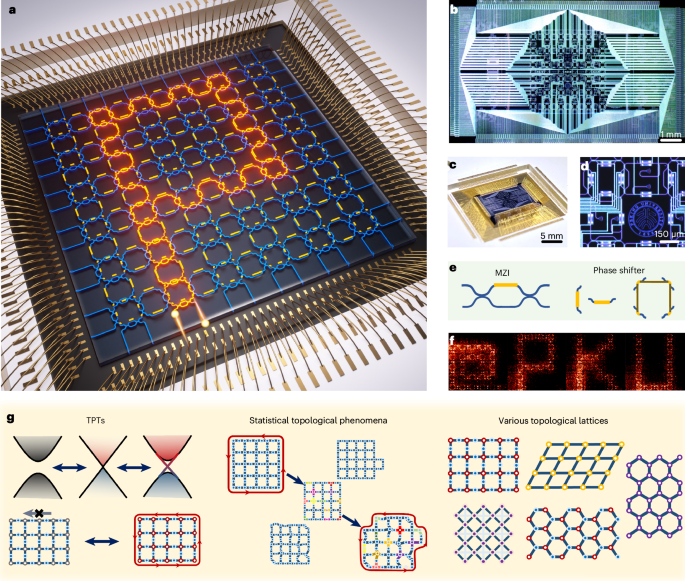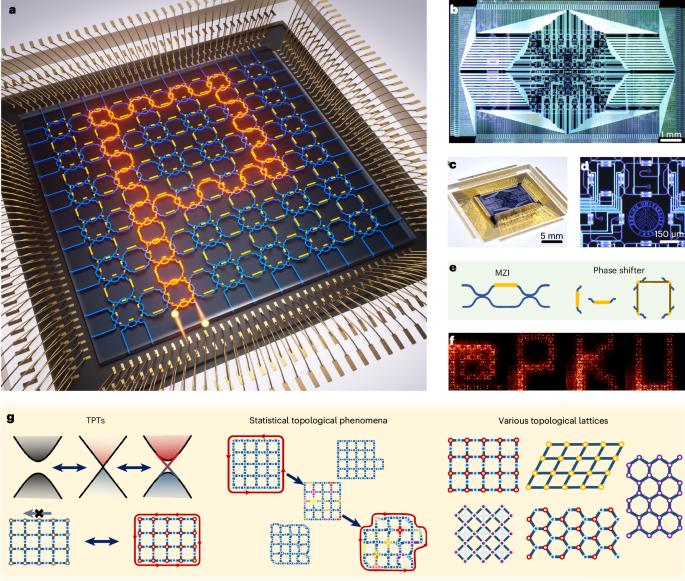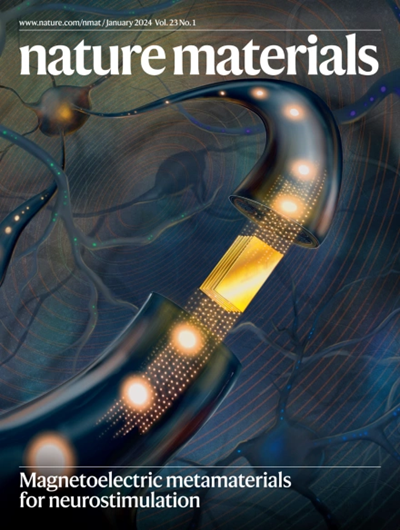可编程拓扑光子芯片
IF 37.2
1区 材料科学
Q1 CHEMISTRY, PHYSICAL
引用次数: 0
摘要
通过控制光的拓扑相位,可以观察到丰富的拓扑现象,并开发出坚固耐用的光子设备。要在实际应用中利用拓扑光子器件实现更复杂的控制,需要高级别的可编程性。在这里,我们展示了大规模集成硅光子纳米电路和微谐振器的完全可编程拓扑光子芯片。在我们的复合系统中,光子人工原子及其相互作用可单独处理和控制,允许任意调整结构参数和几何配置,以观察动态拓扑相变和各种光子拓扑绝缘体。在通用芯片上对人工原子进行单独编程,可以全面统计拓扑稳健性,以应对相对较弱的失调,以及强失调诱发的反直觉拓扑安德森相变。这种通用拓扑光子芯片可以快速重新编程以实现多功能,为基础科学和拓扑技术的应用提供了一个灵活多用的平台。本文章由计算机程序翻译,如有差异,请以英文原文为准。


A programmable topological photonic chip
Controlling topological phases of light allows the observation of abundant topological phenomena and the development of robust photonic devices. The prospect of more sophisticated control with topological photonic devices for practical implementations requires high-level programmability. Here we demonstrate a fully programmable topological photonic chip with large-scale integration of silicon photonic nanocircuits and microresonators. Photonic artificial atoms and their interactions in our compound system can be individually addressed and controlled, allowing the arbitrary adjustment of structural parameters and geometrical configurations for the observation of dynamic topological phase transitions and diverse photonic topological insulators. Individual programming of artificial atoms on the generic chip enables the comprehensive statistical characterization of topological robustness against relatively weak disorders, and counterintuitive topological Anderson phase transitions induced by strong disorders. This generic topological photonic chip can be rapidly reprogrammed to implement multifunctionalities, providing a flexible and versatile platform for applications across fundamental science and topological technologies. The authors demonstrate a programmable topological photonic chip with large-scale integration of silicon photonic nanocircuits and microresonators that can be rapidly reprogrammed to implement diverse multifunctionalities.
求助全文
通过发布文献求助,成功后即可免费获取论文全文。
去求助
来源期刊

Nature Materials
工程技术-材料科学:综合
CiteScore
62.20
自引率
0.70%
发文量
221
审稿时长
3.2 months
期刊介绍:
Nature Materials is a monthly multi-disciplinary journal aimed at bringing together cutting-edge research across the entire spectrum of materials science and engineering. It covers all applied and fundamental aspects of the synthesis/processing, structure/composition, properties, and performance of materials. The journal recognizes that materials research has an increasing impact on classical disciplines such as physics, chemistry, and biology.
Additionally, Nature Materials provides a forum for the development of a common identity among materials scientists and encourages interdisciplinary collaboration. It takes an integrated and balanced approach to all areas of materials research, fostering the exchange of ideas between scientists involved in different disciplines.
Nature Materials is an invaluable resource for scientists in academia and industry who are active in discovering and developing materials and materials-related concepts. It offers engaging and informative papers of exceptional significance and quality, with the aim of influencing the development of society in the future.
 求助内容:
求助内容: 应助结果提醒方式:
应助结果提醒方式:


